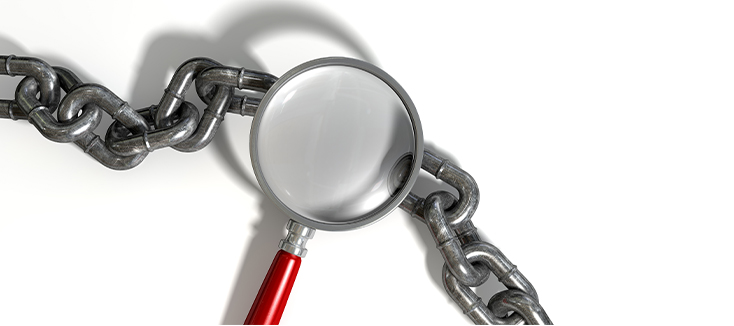The reprocessing procedure for TEE probes is a lengthy one requiring precision and attention to every detail. Making sure patients have the best experience possible and are always getting a perfectly high-level disinfected probe is hard work.
Knowing that there are so many components to the reprocessing procedure can make the prospect of adding another step seem grim. While implementing probe covers may add another step, it's a step that will help ensure that all the other steps are worthwhile and are not wasted. There are actually five great reasons to start using probe covers for your TEE ultrasound probes.
1. Labeling
In the first place, using probe covers is a simple way to distinguish a dirty probe from a clean probe. When using PullUp™ TEE Probe Covers and Bio-Barrier sleeves, it's easy to see at a glance whether a probe is dirty or not. The PullUp TEE Probe Covers are clear with a white band around the base indicating a clean and ready-to-use probe. Bio-Barrier Sleeves, on the other hand, are tinted red and read "HAZARD" around the base.
Making the change to implement these probe covers can help guarantee that a clean and dirty probe are never mixed up. This can help bring peace of mind to staff members and ensure patients get the best care possible every time.
2. Prevent Contamination
Next, making use of PullUp TEE Probe Covers can help prevent contamination. Once a probe has been high-level disinfected and thoroughly dried, it must be stored until its next use. While the probe waits to be used again, it could easily become contaminated. And once the time comes for it to be used, the probe could easily be contaminated en route to the procedure room or even within the procedure room before the procedure takes place.
By slipping on a PullUp TEE Probe Cover immediately after drying the probe, you can be sure that even if something comes into contact with the probe, the insertion tube will remain untouched and will retain its high-level disinfection status.
3. Prevent Spread
After use, TEE probes are laden with all sorts of bacteria and bioburden, including blood, carbohydrates, protein, polysaccharides, fats, oils, uric acid and other nitrogenous compounds. Then there's whatever the probe may have on it if it was used on a patient with a transmissible disease. A used TEE ultrasound probe is a biohazard and must be treated as such.
After pre-cleaning, a soiled probe should be covered in a red Bio-Barrier Sleeve to ensure that it cannot come into contact with anyone or any surface before it can be cleaned and disinfected.
4. Keep Moist
Once a probe has been used in a procedure and is removed from a patient's esophagus, it must be pre-cleaned. This pre-cleaning step helps remove gross contaminants from the shaft while dispensing an enzymatic detergent along the length of the probe's insertion tube. This detergent must remain moist on the probe until the probe can be cleaned. If the detergent dries on the probe's shaft, the cleaning step will be ineffective and, subsequently, so will the high-level disinfection.
Using a Bio-Barrier Sleeve after enzymatically pre-cleaning the probe helps keep the enzymatic detergent from drying on the probe. This, in turn, helps ensure effective cleaning and high-level disinfection.
5. Meet guidelines
The labeling provided by TEE probe covers is also necessary to comply with guidelines set by The Joint Commission. According to ANSI/AAMI ST:79 6.4, "Containers, devices, or carts must be marked with a biohazard label or other means of identifying contaminated contents." PullUp TEE Probe Covers and Bio-Barrier Sleeves both perfectly fulfill this requirement and help your facility remain compliant with the guidelines provided by agencies like The Joint Commission.
Fortunately, making just one small change and adding the use of PullUp TEE Probe Covers and Bio-Barrier sleeves to your TEE procedures can make a huge difference to you, your patients, and your facility. Using probe covers is one easy way to help make patients' health a top priority by ensuring they are never exposed to a contaminated TEE probe.


